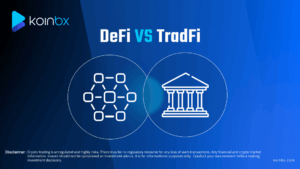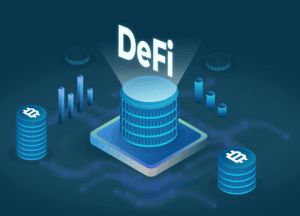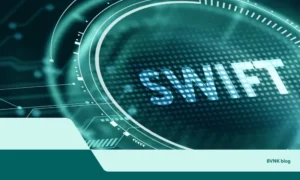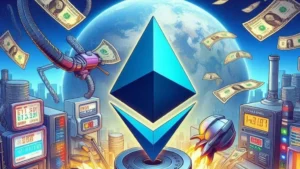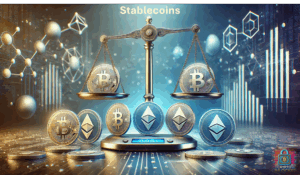In the ever-evolving world of blockchain, speed is quickly becoming the new battleground. While Ethereum has long dominated the smart contract space, it’s no longer the only player in town. A wave of high-performance Layer 1 blockchains—led by Solana, Avalanche, and others—are rapidly gaining momentum, aiming to solve Ethereum’s notorious scalability issues. But the real question is: Are these high-speed chains truly ready to take center stage, or are they still polishing their armor for the main event?
Ethereum: The Gold Standard, but at a Cost
Ethereum remains the largest programmable blockchain by a wide margin, thanks to its first-mover advantage, extensive developer community, and deep liquidity. However, its reliance on proof-of-work (until 2022) and even post-Merge challenges (despite transitioning to proof-of-stake) have highlighted issues like high gas fees, network congestion, and sluggish transaction speeds.
These limitations have paved the way for newer chains to enter the market with bold claims: faster finality, lower costs, and greater scalability. Among these, Solana and Avalanche have emerged as serious contenders.
Solana: Blazing Fast, But Battle-Tested?
Solana stands out primarily for its unmatched throughput. Capable of processing up to 65,000 transactions per second (TPS) with sub-second finality, Solana leverages its unique consensus mechanism—Proof of History (PoH)—which acts as a cryptographic timestamp to improve efficiency.
Pros:
- Speed and Cost: Solana’s low transaction fees (often fractions of a cent) and high TPS make it ideal for DeFi and NFT use cases.
- Developer-Friendly: A growing number of applications and tools are being built on Solana, attracting developers frustrated by Ethereum’s congestion.
- Vibrant Ecosystem: Projects like Serum, Jupiter, and Magic Eden are helping drive real adoption.
Cons:
- Network Stability: Solana has suffered from multiple outages, sparking concerns about its reliability and decentralization.
- Hardware Requirements: Running a validator node on Solana demands high-performance hardware, which can limit decentralization.
Despite these hurdles, Solana’s performance in terms of user engagement and developer activity is significant, suggesting it’s more than a speculative flash in the pan.
Avalanche: The Modular Contender
Avalanche takes a different approach with its unique Subnet architecture—a highly customizable framework allowing users to create their own blockchain networks with specific parameters.
What Sets Avalanche Apart:
- Speed and Finality: With a TPS of 4,500 and finality in under 2 seconds, Avalanche provides impressive performance without compromising decentralization.
- Eco-Friendliness: Its proof-of-stake consensus makes it more sustainable compared to proof-of-work chains.
- Subnets and Customization: Avalanche’s biggest innovation lies in enabling the creation of application-specific blockchains, ideal for enterprises and institutions.
Challenges:
- Complexity: While powerful, Avalanche’s architecture can be intimidating for newcomers and requires a steep learning curve.
- Liquidity Fragmentation: With multiple subnets, liquidity can become fragmented unless bridged or centralized solutions intervene.
Still, Avalanche has attracted major projects like Trader Joe, GMX, and Core, along with enterprise interest that sets it apart from more retail-driven ecosystems.
What About Other High-Speed Chains?
Other chains like Fantom, Near Protocol, and Aptos are also making headlines with their scalable infrastructure and unique consensus mechanisms. However, Solana and Avalanche continue to lead in terms of market capitalization, user adoption, and developer activity, solidifying their position in the altcoin narrative.
Ethereum’s Response: Scaling from Within
While Solana and Avalanche push the envelope on Layer 1, Ethereum is not sitting idle. Its strategy involves Layer 2 solutions like Optimism, Arbitrum, and zkSync, which significantly reduce costs and improve speed by handling transactions off-chain and settling on Ethereum.
Moreover, Ethereum’s rollup-centric roadmap suggests it will continue to serve as the settlement layer while Layer 2 solutions scale it horizontally. However, this model adds complexity and currently lacks the seamless experience offered by some newer L1 chains.
User Experience: The Real Decider?
In the battle of blockchains, user experience (UX) could prove more decisive than transaction speeds or fees alone. Chains that offer seamless onboarding, reliable wallets, and robust infrastructure will likely see broader adoption.
- Solana has made strides with user-centric products like Phantom Wallet.
- Avalanche’s integration with tools like Core Wallet and partnerships with institutions enhances its credibility.
- Ethereum’s fragmented UX across multiple rollups and bridges remains a work-in-progress.
Are They Ready for Prime Time?
The answer isn’t black or white. Solana and Avalanche have proven they can handle large-scale operations, especially during NFT booms and DeFi summer surges. However, lingering concerns—such as centralization risks, network reliability, and regulatory uncertainty—continue to cast shadows.
What’s clear is that these chains are no longer just Ethereum clones or experiments. They are viable alternatives that offer real utility and attract substantial capital and developer talent.
The Road Ahead: Coexistence or Competition?
The future might not be a winner-takes-all scenario. Just as the internet relies on multiple protocols, the blockchain world may support a multi-chain future, where Ethereum, Solana, Avalanche, and others coexist and serve different use cases.
Final Thoughts:
As the crypto space matures, high-speed chains like Solana and Avalanche will likely play a critical role in onboarding the next billion users. But “prime time” is not just about scalability—it’s about resilience, decentralization, developer support, and user trust.
And on those metrics, the race is far from over.
Hooked? Whether you’re a DeFi degen or a curious investor, now’s the time to keep an eye on these speedsters. They’re not just Ethereum alternatives anymore—they’re ecosystems of their own, competing to define what Web3 at scale really looks like.



